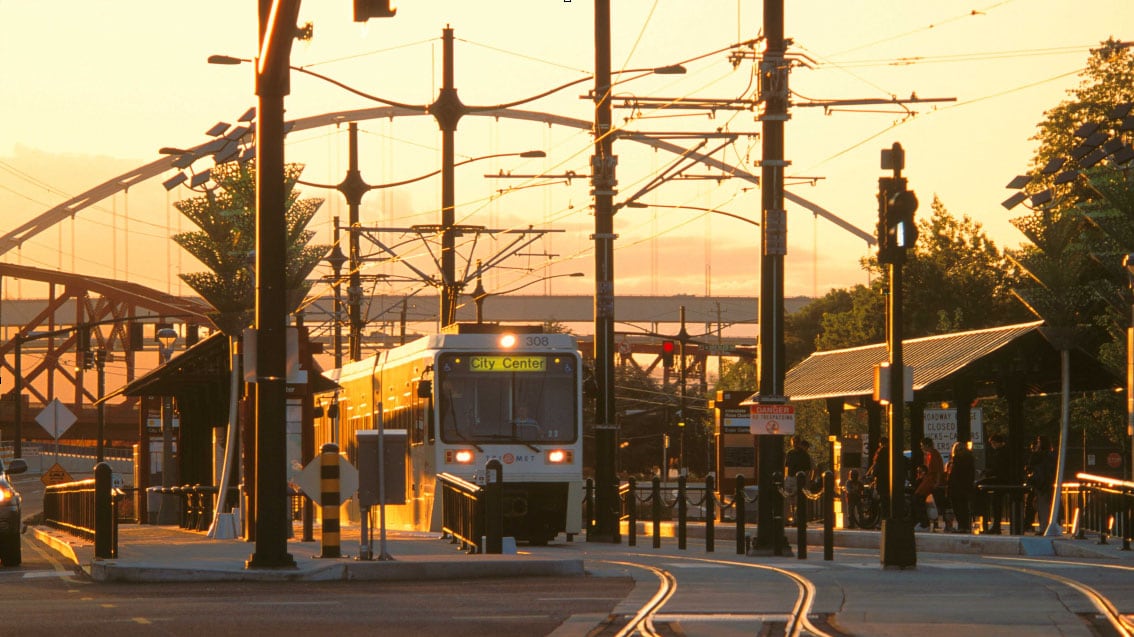Portland's most expensive proposed public transportation project won't be as useful as previously thought, according to new numbers quietly released last month.
The planned $2.8 billion light rail line between downtown Portland and Bridgeport Village in Tigard would serve 12 percent fewer passengers than previously forecasted.
On Feb. 6, TriMet downgraded its estimate of the number of daily passengers the new line would serve to 37,500, down from 43,000. That's a significant reduction, in part because the proposed rail line, called the Southwest Corridor Project, is the biggest piece of the regional government Metro's $3 billion transportation measure, slated to go before voters in November.
Interestingly, TriMet lowered its projected ridership numbers because the project now plans to build 2,000 fewer park-and-ride spaces than a previous version of the plan. The agency reduced that number to save costs and lessen the impact on car traffic near MAX stations.
The lowered number illustrates what a moving target ridership can be. For example, TriMet has struggled to meet projections for the Orange Line, which since 2015 has run between downtown and Milwaukie, and did not meet TriMet's first-year projections by nearly 6,000 riders a day and remains shy.
According to an analysis of TriMet figures conducted by the conservative think tank Cascade Policy Institute, the agency is also failing to meet longer-term projections of how many riders would take the Yellow and Green lines. By 2020, the Yellow Line, which opened in 2004, was supposed to have nearly 4,700 more daily riders than it actually did last year. The Green Line, after extensions opened in 2009, was supposed to have 12,000 more riders than it does.
TriMet doesn't dispute the failure to meet projections, but does dispute its significance.
"While there have been some decreases in transit ridership across the country in recent years," TriMet spokeswoman Roberta Altstadt says, "the rate in our region has been slower than in many others, and ridership is starting to increase again.
"No matter what small fluctuations we see," adds Altstadt, "we know [the Southwest Corridor] will end up carrying the equivalent of an I-5 car lane's worth of people between the southwest part of our region and downtown Portland."

Still, the lower numbers are notable. Since 2009, TriMet has opened two new rail lines. But since then, the overall number of public transit riders has fallen 6 percent—even as the region has set a goal of more than doubling ridership by 2040.
No surprise, then, that the Southwest Corridor Project is taking flak from both sides of the transit debate.
Cascade Policy Institute argues TriMet should end investment in light rail. On the left, advocates for more public transit are pushing to make more investments to get more commuters aboard transit to address climate change and reduce traffic deaths.
"Stop repeating the mistake," says John Charles, president and CEO of Cascade Policy Institute. "Light rail, heavy rail, streetcar—those are all failed strategies. Stop spending money. Anything light rail can do, buses can do better, cheaper and faster."
Public transit advocates argue from the other direction that the new rail line will be a top-dollar project that doesn't sufficiently address the needs of riders. They fear TriMet hasn't focused sufficiently on how to increase its bus service and connect those buses to the new rail line.
The Orange Line doesn't link to the bus hub in Milwaukie, creating a cumbersome transfer for riders. Former TriMet planner and transit advocate Jim Howell says he worries TriMet is making the same mistake with the Southwest Corridor Project.
Just 23 percent of rides on the proposed line are expected to be transfers from other transit—suggesting the light rail line isn't well-linked with the existing system. TriMet documents say the agency will start a process to determine bus line changes only a year before the project opens.
"That's ass backwards," says Howell. "I question whether this area should be top priority for rail."
He sees declining ridership numbers and says Metro and TriMet need to rethink their priorities.
"We've been going in the wrong direction," says Howell. "There are things that need to be done that have been put off because of this project. Public transit and bicycles are the answer in urban areas if you're serious about climate change and you're serious about good land use development and you're serious about saving lives."
TriMet argues the Southwest Corridor investment remains key.
"This line will bring high-capacity transit to the one highly congested corridor in our region currently lacking this travel choice," Altstadt says. "Thirteen to 17 hours of weekday congestion are predicted in the Southwest Corridor by 2035. Now, more than ever, we need a congestion-proof, high-capacity transit option to serve current and future residents, employees and students."
The Metro transportation bond measure on the ballot this November is crucial if TriMet is going to have the funds to build the Southwest Corridor Project.
Roughly a third of the $3 billion transportation measure would go toward the Southwest Corridor rail line.
One former Metro president says getting rid of parking is a good thing, but the project may face difficulties attracting the number of riders officials want.
"The current low-density land uses and auto-dominant street design along Barbur [Boulevard] are big challenges," says David Bragdon, now executive director of TransitCenter, a New York City think tank. "For a line to succeed, it needs to have a whole lot more housing and job density, and much more pedestrian-oriented streetscapes and station areas, than that corridor currently does."

